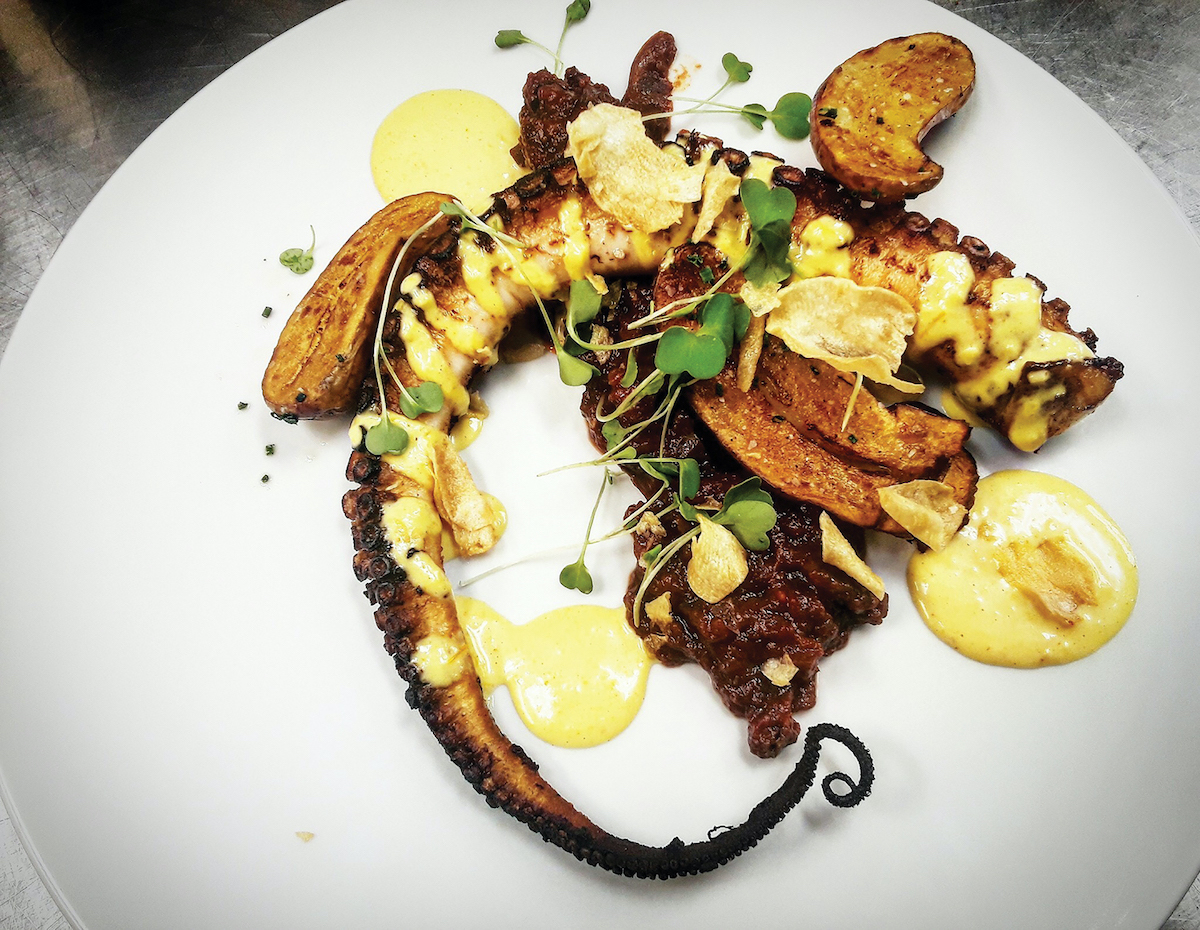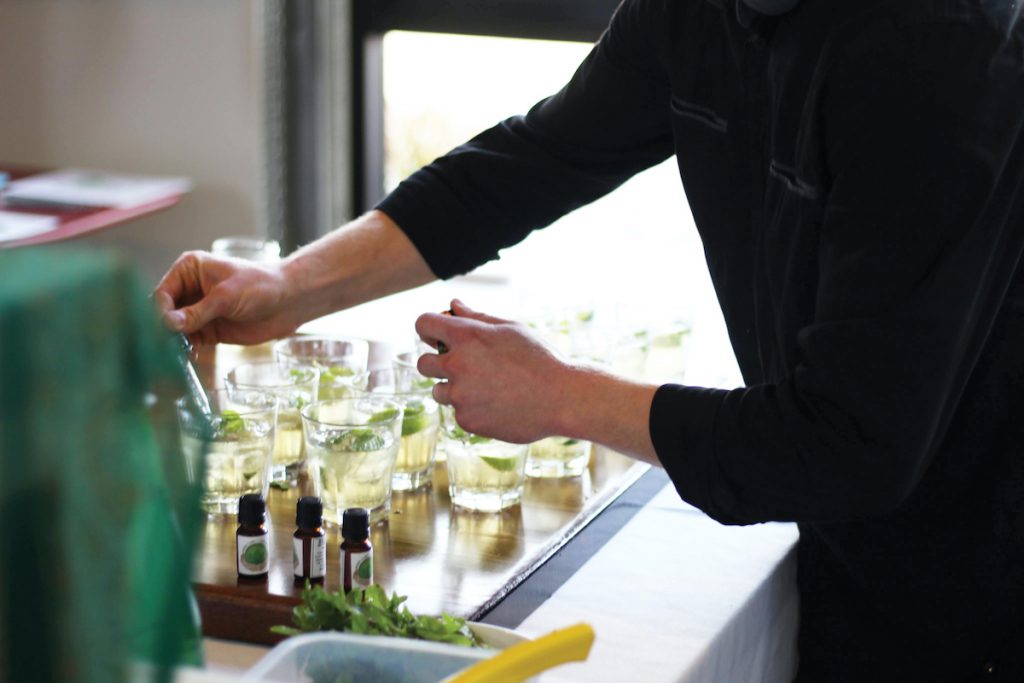
Adventures in High Dining
Good chefs worth their kosher salt are hip to dining fads, know food science, craft unusual taste profiles and are skilled at sourcing their ingredients from farm to table. Lately, the buzz about food isn’t just about unique flavors but, also, its role in wellness via beneficial ingredients. In the 21st century, the addition of cannabis to food is no longer a novelty, as evidenced by USA Today deeming cannabis-infused edibles the “food trend of the year” for 2018. This change has led to various ways of showcasing cannabis in foods, from the inclusion of terpenes to the holding of pop-up cannabis-containing dinners.
As the public learns more about the properties of cannabis, foraging into the unknown during a gourmet dinner provides a place and an opportunity to experiment. Before indulging in such a feast, however, understanding the basics is helpful.
Cannabinoids are naturally occurring compounds found in cannabis, and cannabidiol, or CBD, lacks the psychoactive effects commonly associated with the plant. A CBD-infused meal would be a good choice for those who prefer not to feel “high.” At most, the effect is generally subtle sedation, likened to the feeling after a vigorous workout.
Tetrahydrocannabinol, or THC, is the cannabinoid that makes people feel “stoned.” A meal infused with THC will cause a gradual, but longer-lasting euphoria as compared to smoking cannabis flower, which can have a more instantaneous result but with a shorter duration.
Terpenes, of which cannabis is known to have over 100 different kinds, are the latest consideration to both scientists and chefs. These powerful, plant-based organic compounds are commonly found in fruit, spices, beer and perfumes and possess fragrance, flavor and reported health benefits.
Just like a sommelier may select a particular vintage to complement a meal, chefs may consider “cultivars,” or plant varieties produced in cultivation by selective breeding. For example, wines from the Bordeaux region are known for medium- to full-bodied attributes with aromas of black currant and plum and earthy notes. Cultivar selection is similar, as chefs can choose the ideal type of cannabis and its terpenes to complement their culinary creations. The California Department of Food and Agriculture (CDFA) is now establishing cannabis appellations similar to wine terroirs.

Shawn Sherman, owner of Golden Apple Cannabis Co. in Paso Robles, explains how his company has seen their terpene sales become a significant segment of their business. “I liken it to the early Silicon Valley days but for craft consumables.
“An example of one terpene would be limonene, found in citrus, which is lemon essential oil boiled down to a single isolated molecule,” Sherman explains. “Another example would be alpha pinene, also found in pine needles, basil, parsley and dill.” With terpenes, aromas are amplified, causing flavors to be sensed more vibrantly. For instance, adding limonene to a fish entrée results in a boosted citrus profile, imparting an upbeat mood and clarity of mind.”
Arizonian Chef Mike Apergis, who calls himself “Da CBD Chef,” plays with terpenes in his dishes. “My buddy infused some olive oil with some Super Lemon Haze [a popular cannabis strain with a citrus profile]. I made some orange roughy [fish] with an infused pineapple salsa — it was a hit.”
Chef Mike attributes his motivation for using terpenes to his 20-plus years of being a chef and his cannabis knowledge. “I realized I could make a difference in changing the taboos about cannabis and food.” Social media has been a big part of validating his passion. “Ever since I’ve been posting my creations, I have had a lot of people reach out to let me know how I inspired them.”
A bold pioneer in infused dining, he cautions that “the stigma falls on us. We need to remember we’re being constantly scrutinized. So be professional, remember why you consume, treat it as a medication, educate yourself. We have minimal room for error in a lot of people’s eyes.”
Chef Derek Upton, an Arizona-based CBD chef and on-the-rise television personality, is the creator and star of Grass Roots Kitchen LLC’s “Stay Hungry Kitchen” show. When discussing his private dinners, he says, “I look at cannabis strains and terpenes like I would pairing wine or beer in flavor profiles. With terpenes, a chef can really create amazing experiences.”
Chef Derek’s signature dish is purple potato gnocchi with Turkish fig jam, caramelized mushrooms, summer citrus gastrique and fresh basil flowers, which highlights his talent for colorful presentation and expert CBD infusion technique. His guests express how amazing they feel eating plant-based food, “knowing cannabis has more to offer than simply getting high.”

